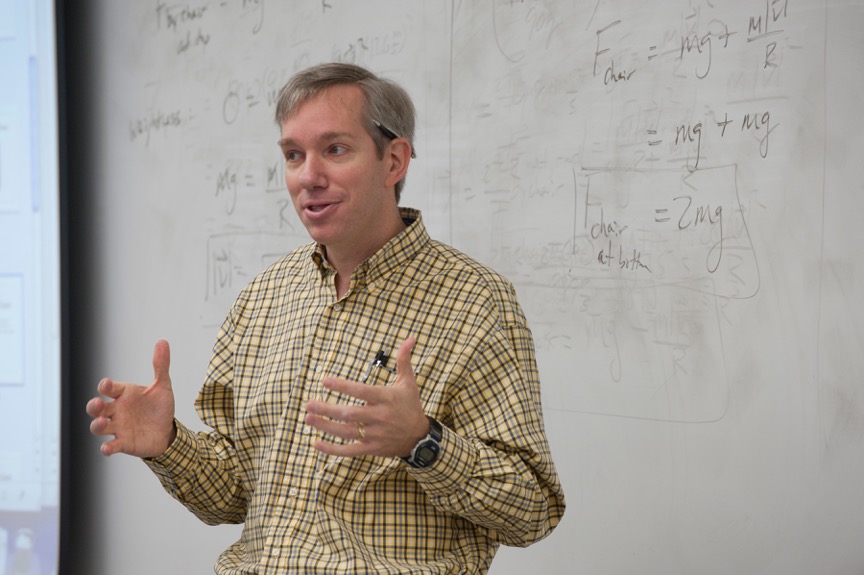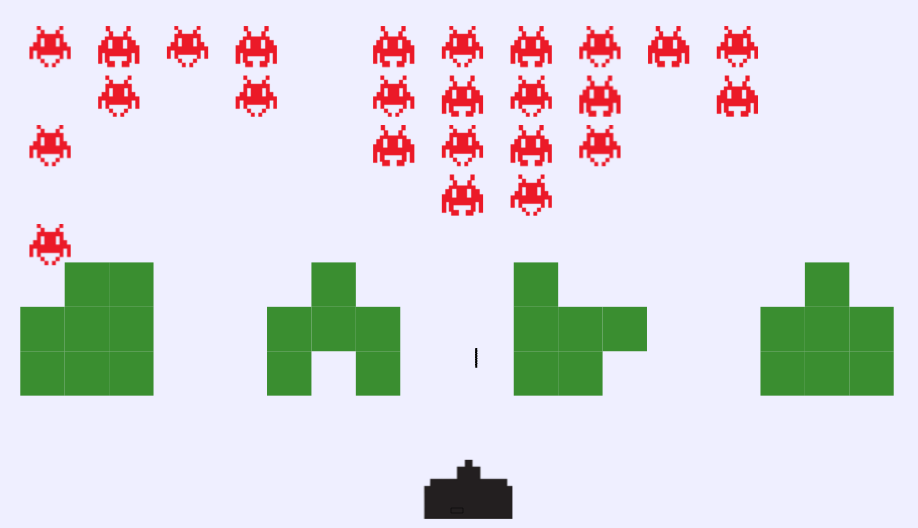Dr. Aaron Titus is Associate Professor of Physics and Chair at High Point University. He has been using and creating technology to teach Physics since the late 90s. I’ve been fortunate to know Aaron for many of those years, originally through our mutual work on WebAssign and now with Trinket and GlowScript. In this interview, Aaron talks about specific tools he uses in his classroom, how to get educators and students alike interested in using coding for Physics, and more. Enjoy and definitely check out some of his links!
You can find other interviews in our interview series here.

Brian: Could you describe what types of tools and technology you use in your Physics classes.
Aaron: I use Trinket for my course web site, and now I’m using Trinket for my course notes themselves, including editable code embedded within the course notes. I use WebAssign for online homework. I use VPython to teach computational modeling and Tracker for video analysis in the laboratory. I also use Vernier’s equipment for data acquisition with sensors in the laboratory. Computational modeling with VPython and video analysis with Tracker are the two most important technologies that I want students to learn for doing physics.
Brian: Why is coding an important part of your teaching? And in Physics education in general?
Aaron: Coding is a professional skill that physics students will use regardless of whether their career is in physics, engineering, business, or technology in general. Yet, I think it’s important for my teaching because it enables students to solve more interesting problems in introductory physics. Traditionally, students only study systems with constant net force or an easily integrable net force, like a harmonic oscillator. But if they learn coding, they can study much more interesting physics in the freshman year, including systems for which the net force is not constant. A simple example is projectile motion. Without coding, students have to ignore air resistance. With coding, students can model a home run in baseball and compare the predicted distance of a baseball with the measured distance.
Brian: How did you get started with code?
Aaron: I started as a student, learning Basic on an Apple IIe in high school in 1988. I progressed as a graduate student in 1995 when I learned HTML and Perl and began writing CGI scripts. But as a teacher, I started writing code (and teaching students to write code) when I adopted the textbook Matter & Interactions at High Point University in 2003 and learned VPython.
Brian: What would you suggest for other Physics educators looking to incorporate code into their classrooms?
Aaron: My number one suggestion is to use the textbook Matter and Interactions. I learned computational modeling using the Instructor Resources in VPython written by Ruth Chabay and Bruce Sherwood. It had an enormous impact on my entire career as a teacher. My second suggestion is to try some of the activities developed by AAPT and the Partnership for Integration of Computation into Undergraduate Physics.
Brian: What about students?
Aaron: Take my class. 😉 I teach a course for non-science majors called “Physics for Video Games”. Students learn physics and VPython, in the context of video games. It’s a great way for students to learn how to code for the first time.

Brian: I know some of your lessons use space exploration examples, including movies like The Martian. Do recent advances by NASA and companies like Space X and Blue Origin help get students excited about learning Physics?
Aaron: I’ve always been jealous of astronomy because recent research discoveries every day can be brought into the introductory classroom. But in an intro physics class, most of the content of the traditional course is pre-1905. Most introductory physics courses do not even incorporate atoms. By teaching computational modeling in the intro course, students can learn numerical integration and can solve problems that seem more relevant and contemporary. Yes, the news provided by these companies help physics seem relevant because the news stories can be a platform for real-world problems. Students can model sending a rocket to Mars or an asteroid or comet, for example. But without teaching computation in the intro course, this would not be possible.
Brian: What else, in your opinion, can we do to get students more interested in science, including Physics?
Aaron: I asked a similar question to another physicist. She answered something like, “Stop studying bouncing balls and get to the fun stuff.” Bringing contemporary physics like particle physics and contemporary methods (like numerical methods) into the introductory physics class can definitely get more students interested in physics. Another huge opportunity is life science. I think that applying physics in a biological context can also attract more students. The interest of students in life science is huge. Yet, they often do not see physics as relevant. That’s why I want to apply physics to inclined planes less and to atoms more.
Brian: What’s the coolest Physics experiment (insert absolute zero joke here) you’ve performed or been a part of?
Aaron: The recently published September 2016 issue of the American Journal of Physics selected our experiment “The motion of a spring released from uniform circular motion”, as the featured article. It was a joint project by Tom Dooling, Professor of Physics at the University of North Carolina at Pembroke; Mr. Jeff Regester, High Point University Instructor of Physics; Matthew Carnaghi, a 2016 High Point University graduate; and me. The experiment emerged from a freshman research class that Carnaghi took at HPU with my colleague, Briana Fiser. The project used an apparatus Regester built for an experiment on NASA’s reduced-gravity aircraft to twirl a spring in circular motion and release it upon triggering with a remote control. Using high-speed video, we measured the unusual evolution of the spring as a wave traveled outward along the spring. The experiment is a wonderful mechanical analogy of retarded fields, meaning the time delay between the cause of a change in a field and the effect at some distance away. Earth is 8 light minutes from the Sun so if the Sun were to suddenly disappear, Earth would continue orbiting for eight minutes as if the Sun were still there. In the same way, the end of the released spring continues traveling in a circle until a wave travels down the spring, even though its center of mass travels tangent to the circle. Regester produced a YouTube video where he explains the effect and shows results from experiments and computer models.
Being the featured article in the American Journal of Physics was a huge honor. But the neatest part to me is that it began as a student’s project in his freshman year and was made possible by collaborations with regional physics teachers. It shows the benefit of teaching students video analysis and computational modeling early in their freshman year. And it shows the value of the North Carolina Section of the American Association of Physics Teachers where we formed the collaboration.
Thanks for reading! Check out the archives of our other interviews here.
Find more lessons, challenges, and tutorials at hourofpython.com.